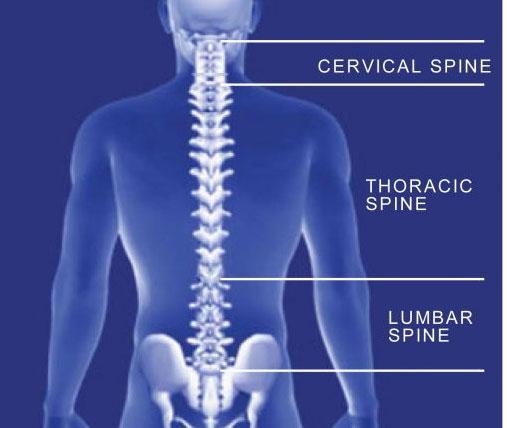The term spondylosis is used to describe any manner of spinal degeneration, and is more of a descriptive term than an actual diagnosis or condition. It may or may not be causing a patient’s pain, and a diagnosis should still be found by a doctor to begin treatment.
Causes
There are many things that could contribute to the pain. Common things may include facet joint osteoarthritis, which is pain caused during extended activity or inactivity. The patient could have spinal stenosis, which creates a narrowing of the spinal canal and creates pain while walking, or a patient may have a herniated disc, when a rupture of the vertebral disc causes the disc material to press against the spinal nerves and cause pain.
Symptoms
Many people can experience spinal degeneration and not have any symptoms. Sometimes, this can cause back pain and nerve pain. If there are pinched nerves in the neck, there can also be headaches. Bulging discs in the spine can cause inflammation, which can cause the nerves to be more sensitive and increase the pain. Any disc herniations caused by the degeneration can push on the ligaments of the spine and cause pain. Chronic pain can result because of the degeneration, and there can be muscle spasms and trigger points.
If there is a herniated disc, the pain may shoot into a limp. A herniation in the lumbar spine may cause pain that can be felt in the lower back before radiating in the legs. If it’s a sciatic nerve that is originally causing the pain, patients may find that the pain goes down to the foot. Certain conditions can also cause tingling and numbness. If a patient has a pinched nerve that is causing pain, they may also feel numbness and tingling. If it’s severely pinched, the patient may also feel weakness of the extremity. When a bulging disc is involved, patients may find the pain is worse if standing or sitting and changing positions, while some find that moving can help ease the pain.
Diagnosis
Since there is no one condition that causes spondylosis, a patient would have to have a clinical diagnosis for the pain, whether that is a disc issue or stenosis. Patients can be diagnosed through a combination of X-ray, CT scan or MRI scan. If a patient is just being told they have spondylosis, they should ask the doctor for clarification of what is causing the pain and what part of the spine is degenerating.
If the degeneration is in the spinal disc, it could be related to degenerative disc disease, and if the degeneration is in the facet joints, it could be osteoarthritis. Once patients have an accurate diagnosis of what is causing their pain, they can find better treatments. It’s important to note that the pain may also not be caused by spinal degeneration. Spinal degeneration can occur with aging and does not necessarily cause pain. Other diagnostic testing may be necessary to determine the exact cause of the pain, and if it is more than one condition.
Call Advanced Spine Center today
If you’re experiencing any of the symptoms of spondylosis, contact Advanced Spine Center today. Led by Dr. Courtney, and incorporating both high tech and high touch, we get our valued patients back to their lives so they can enjoy all the activities they love!
Selected as one of Dallas’ Best Doctors by D Magazine, Dr. Courtney is known for his straight-forward, honest approach and operates only if clearly indicated with proven techniques, which has earned him an excellent reputation among his professional colleagues, medical peers and patients. Contact us today!










